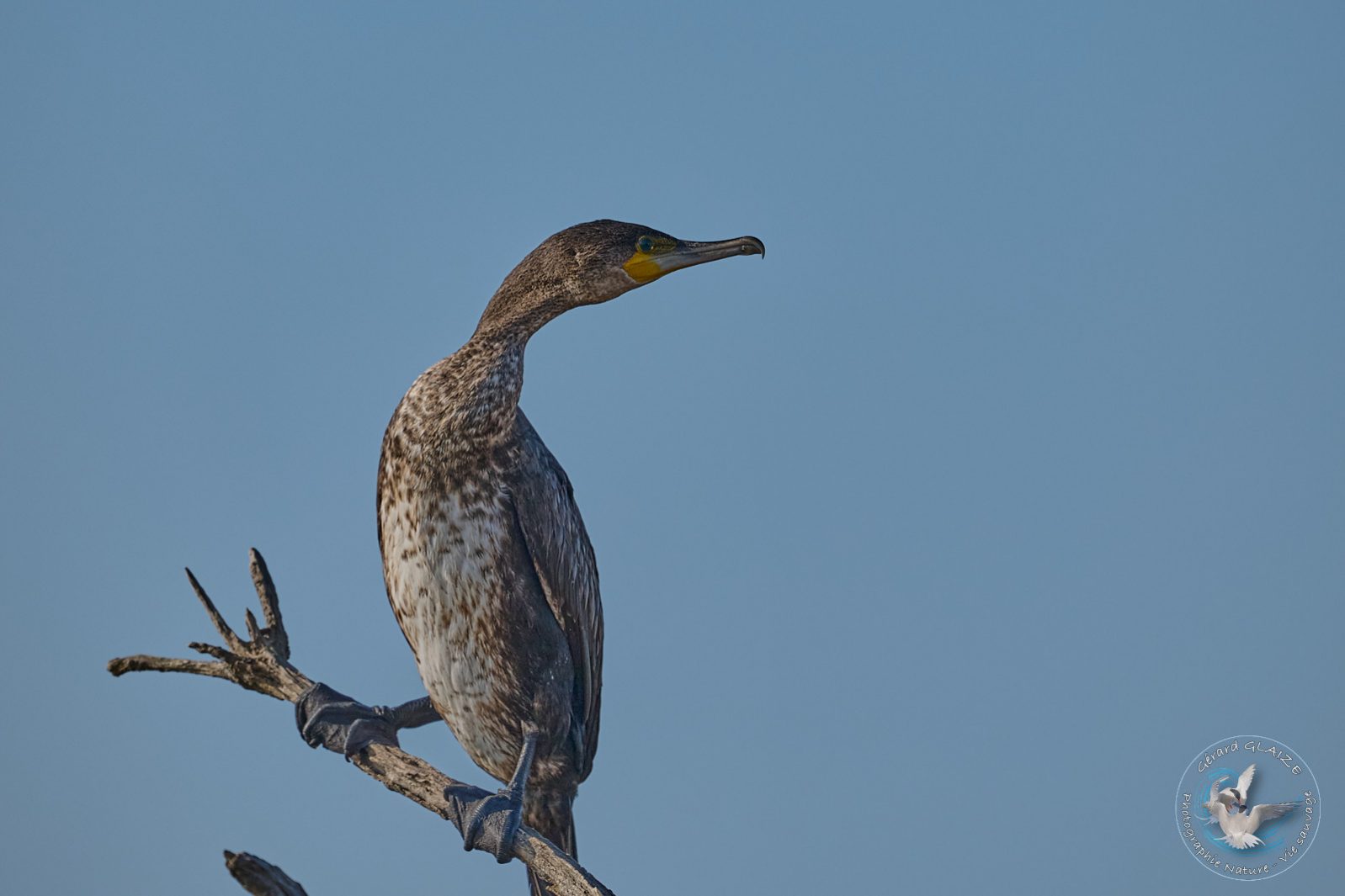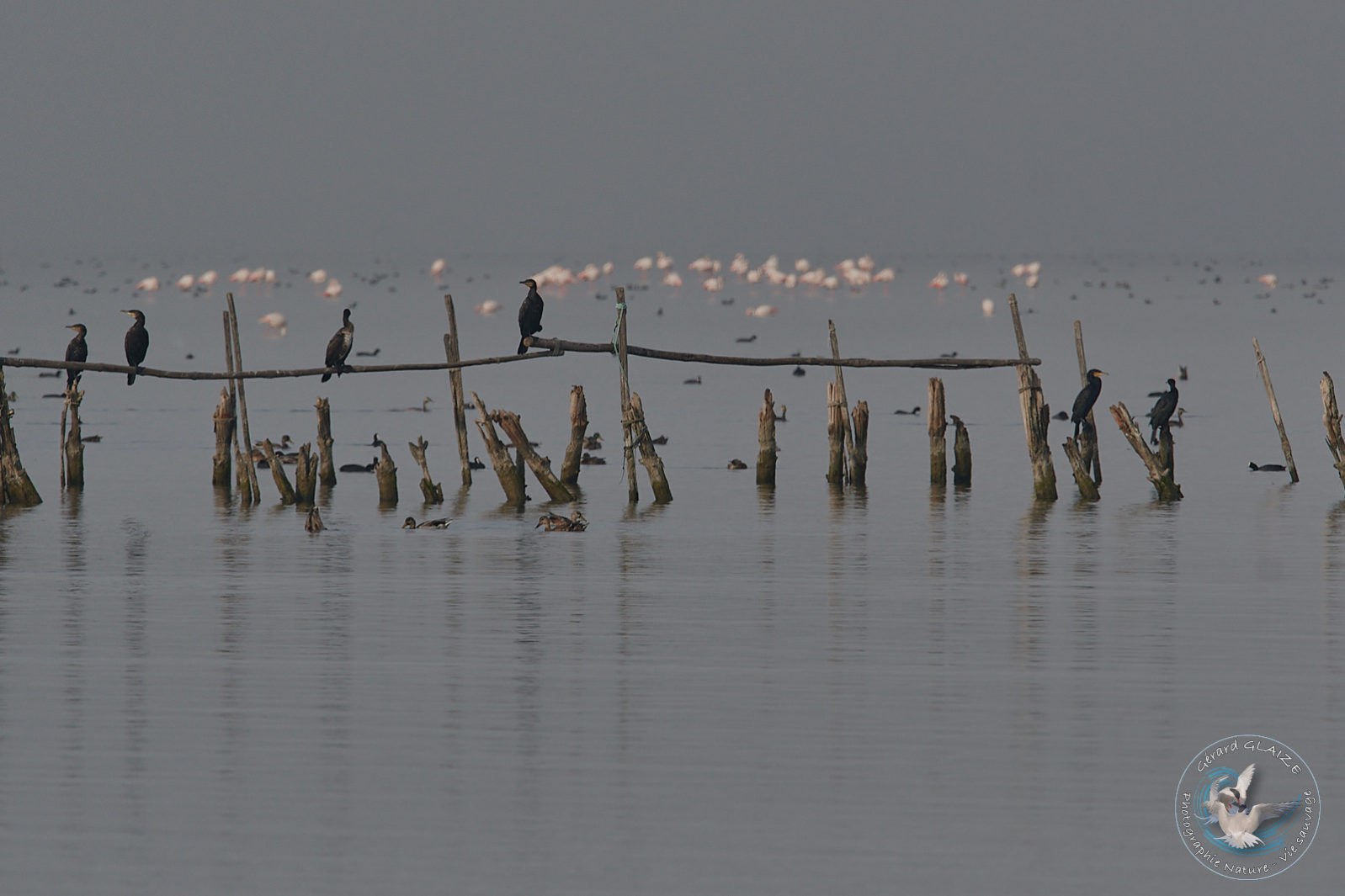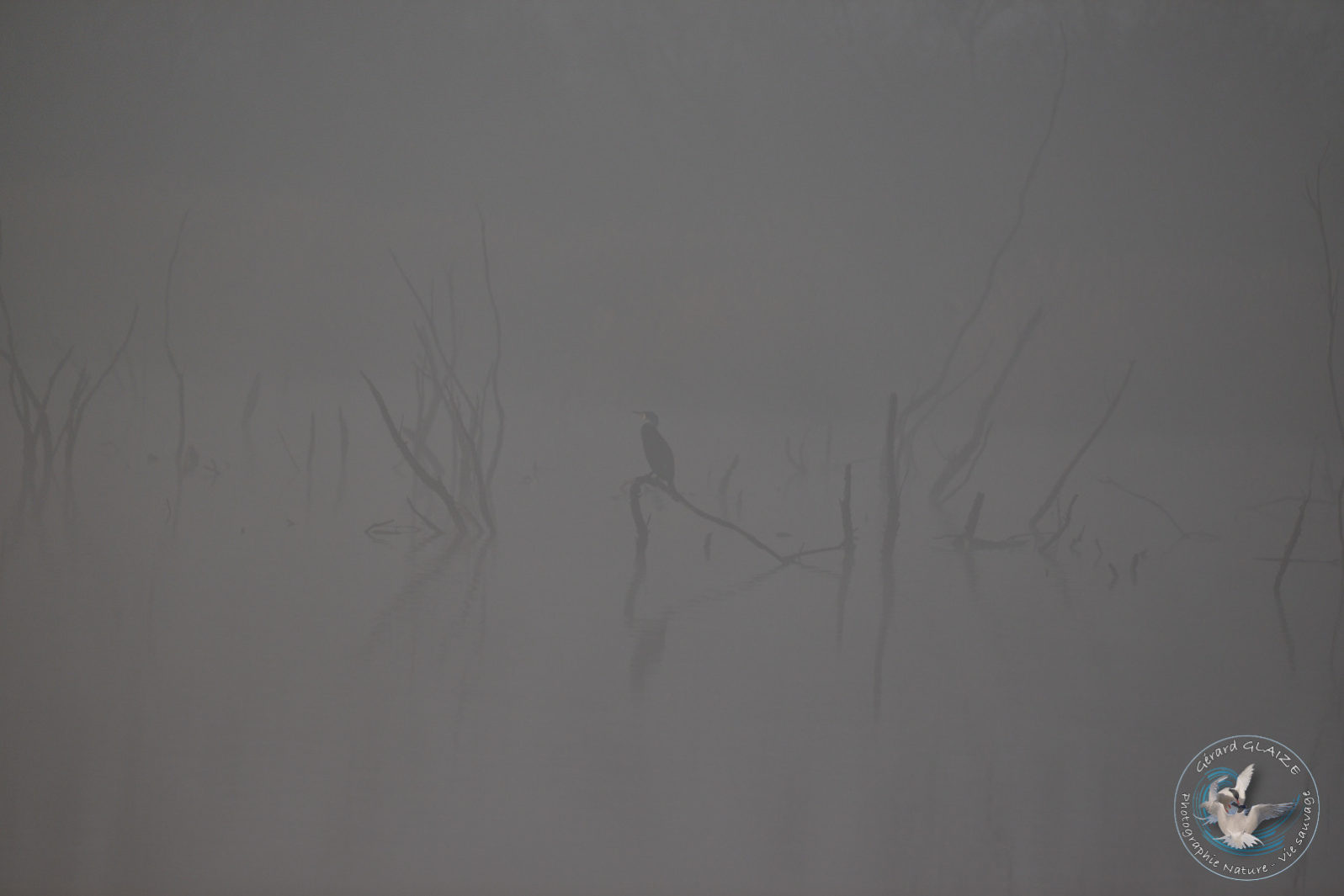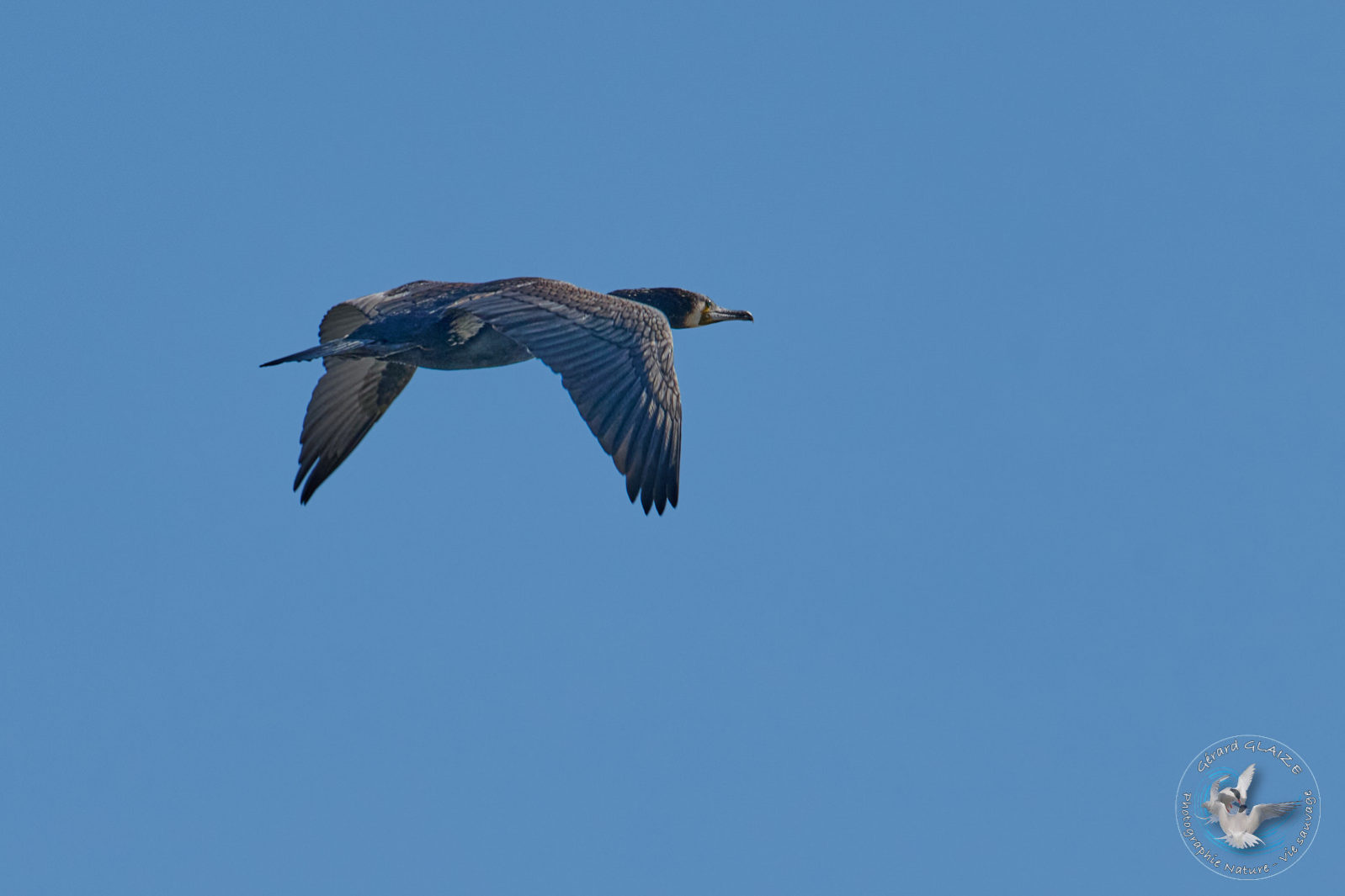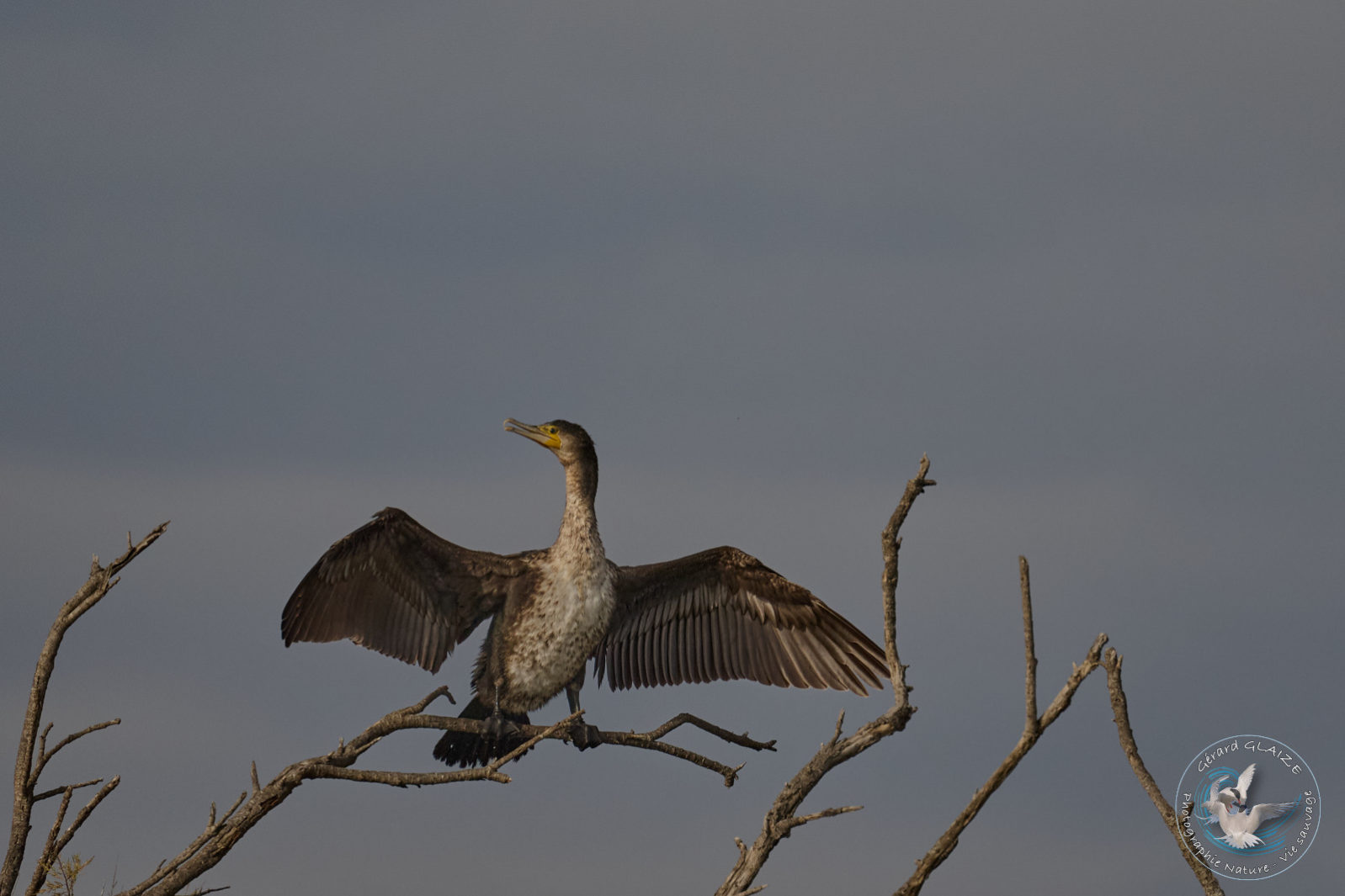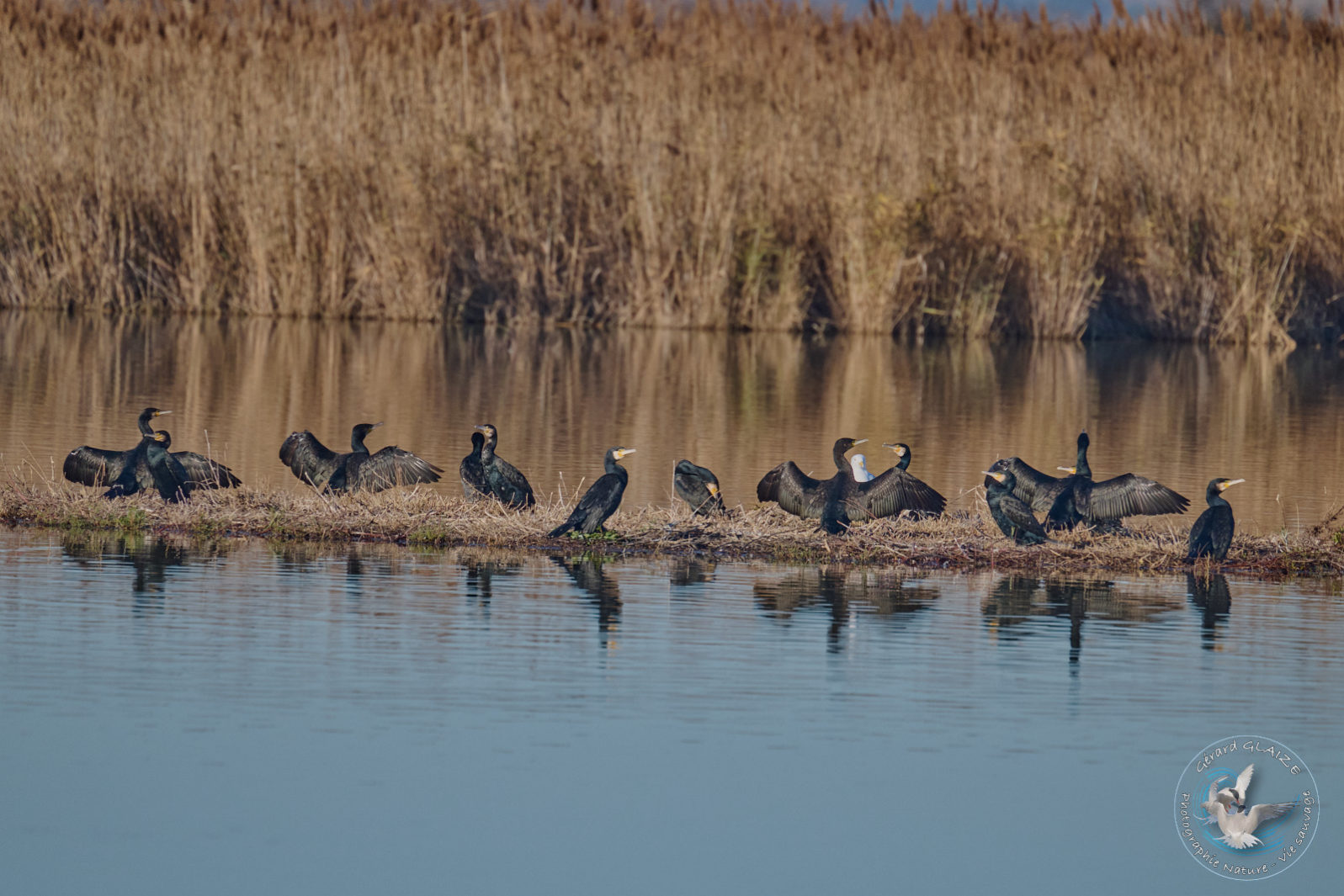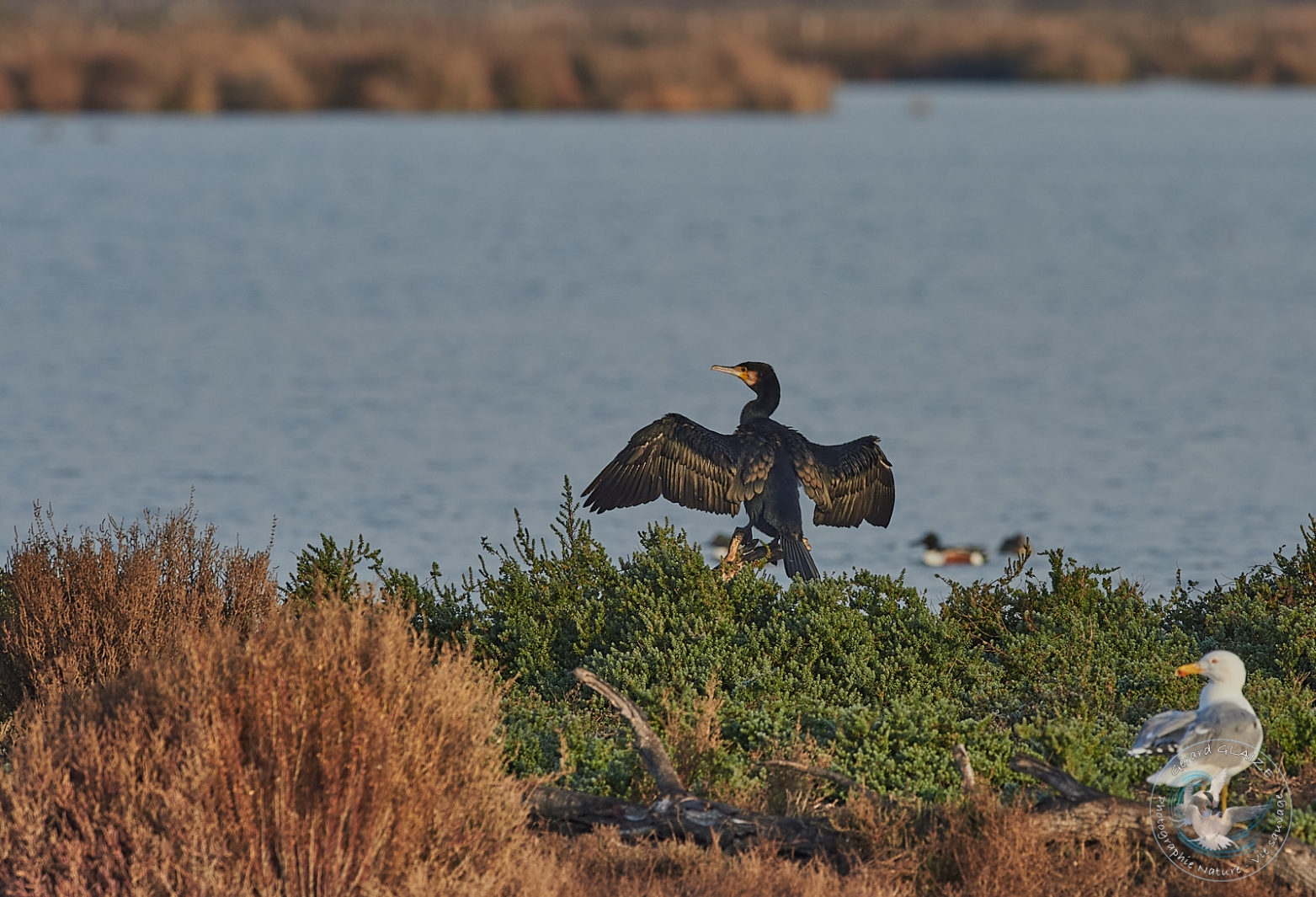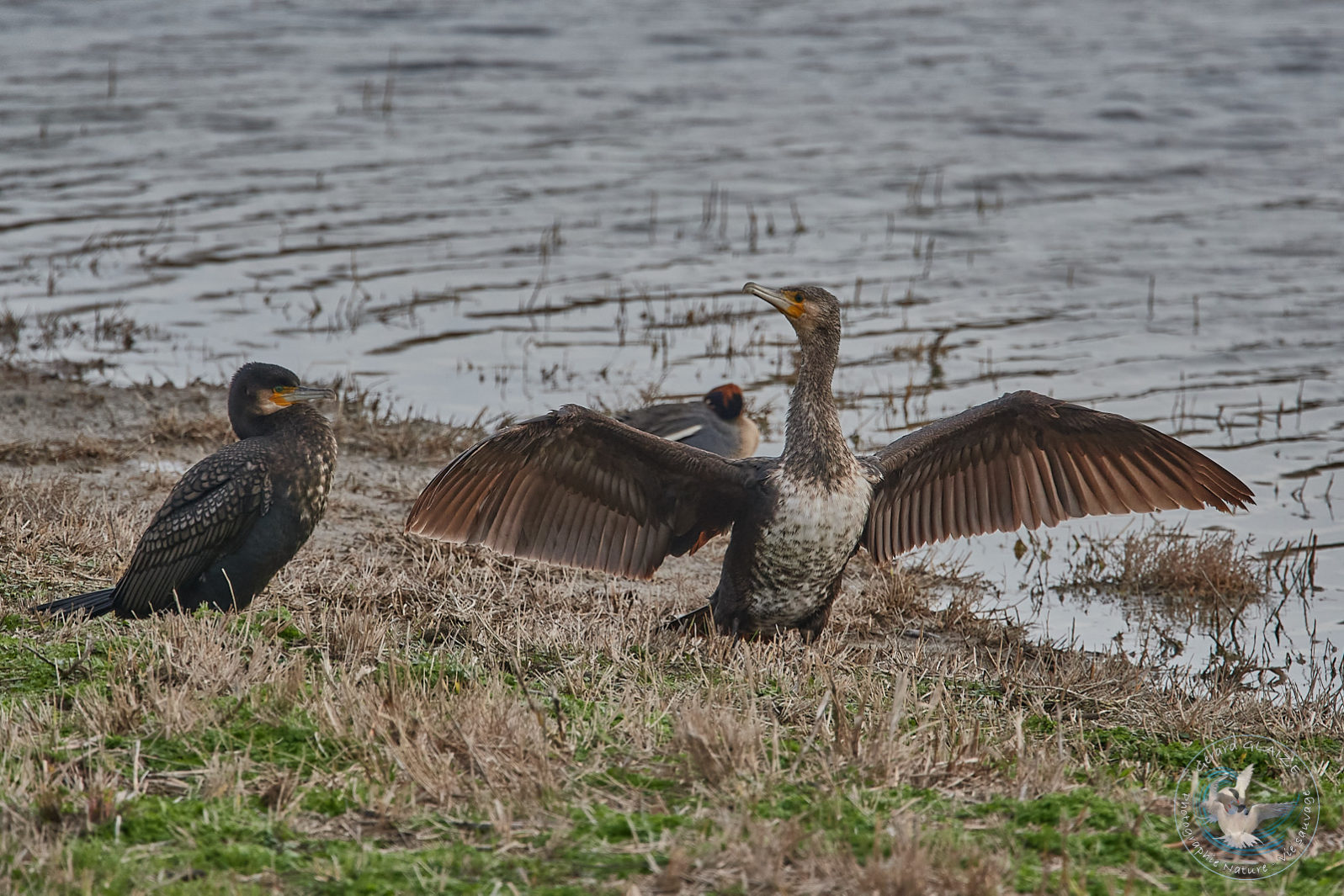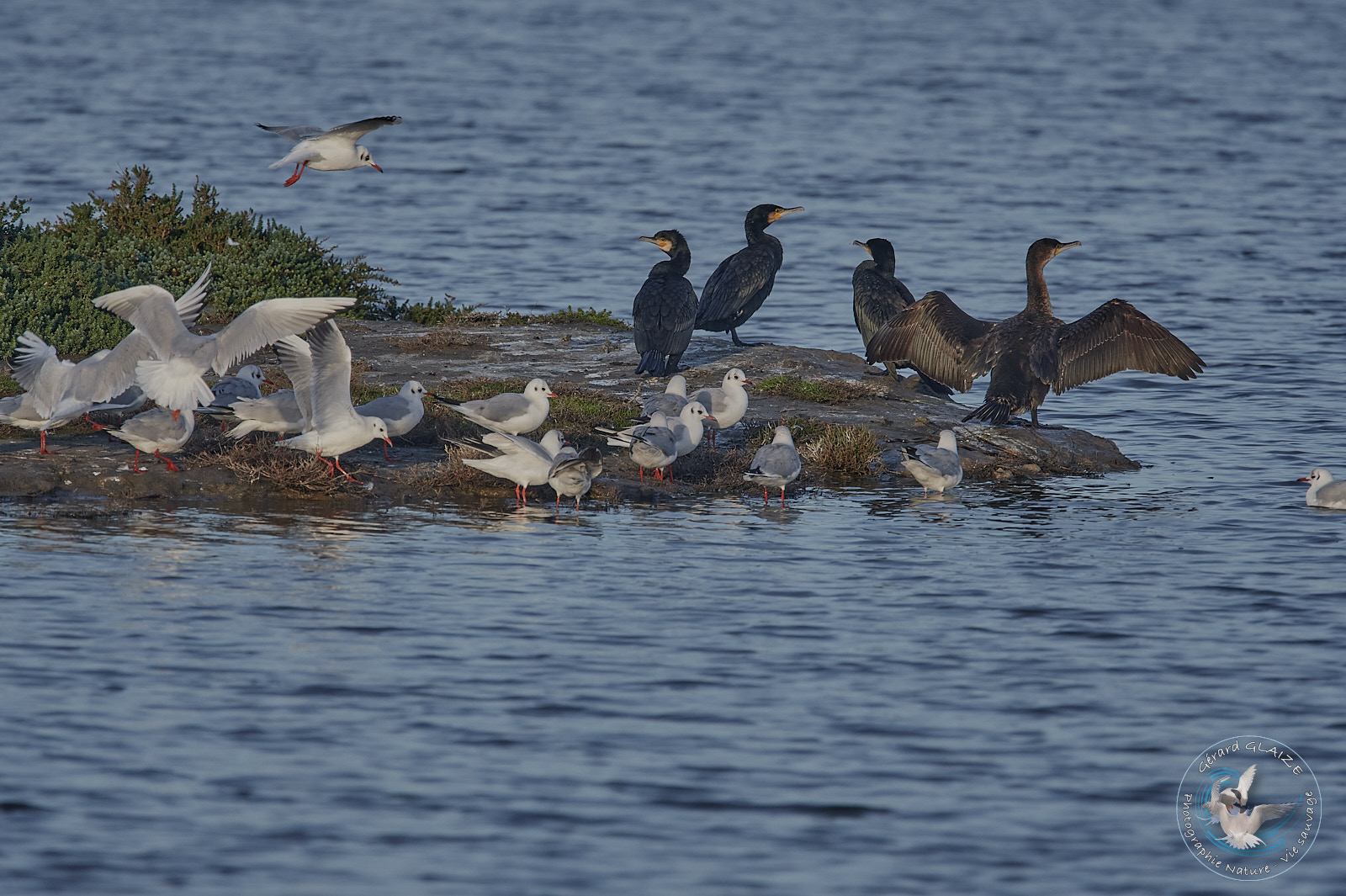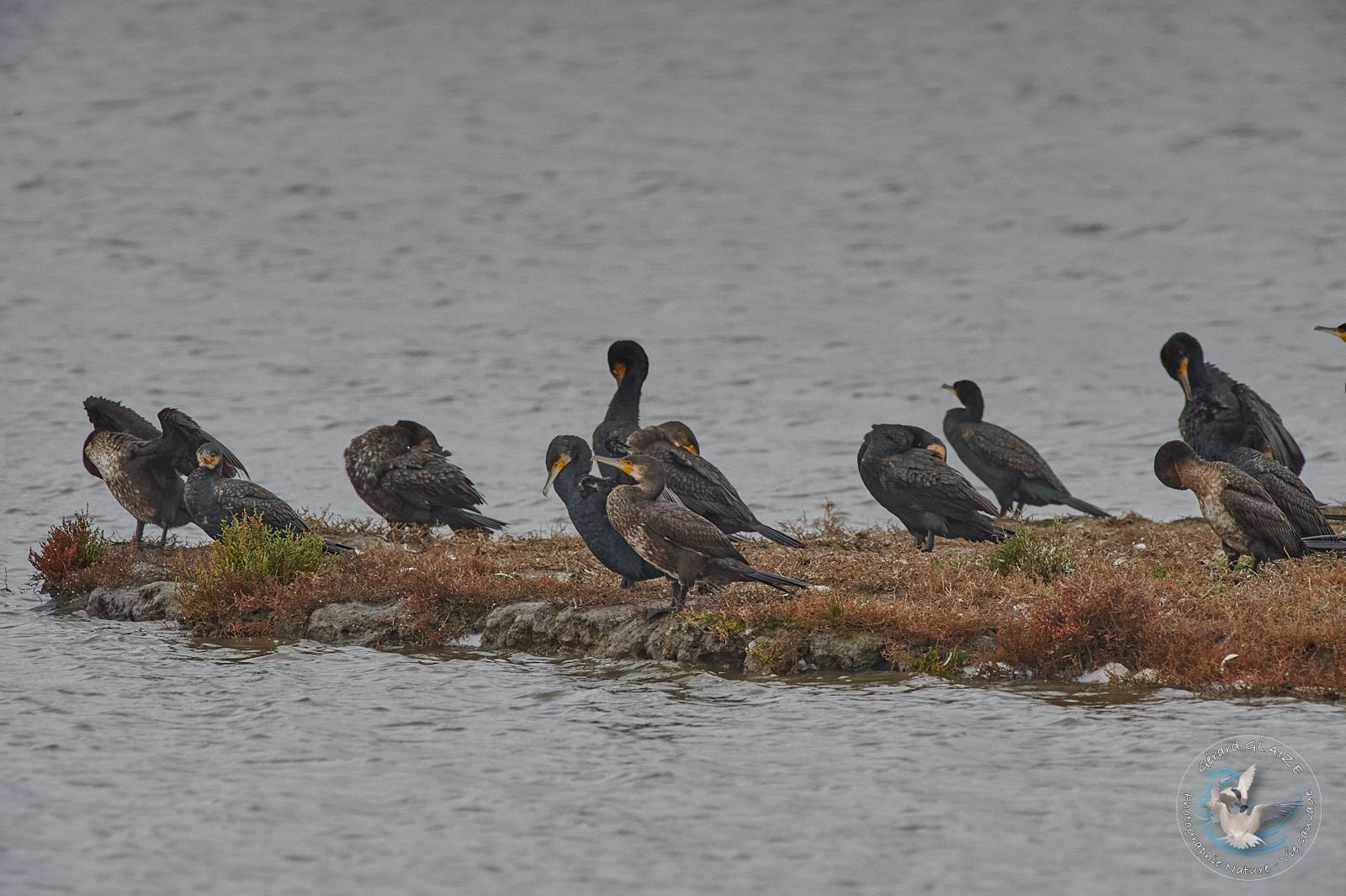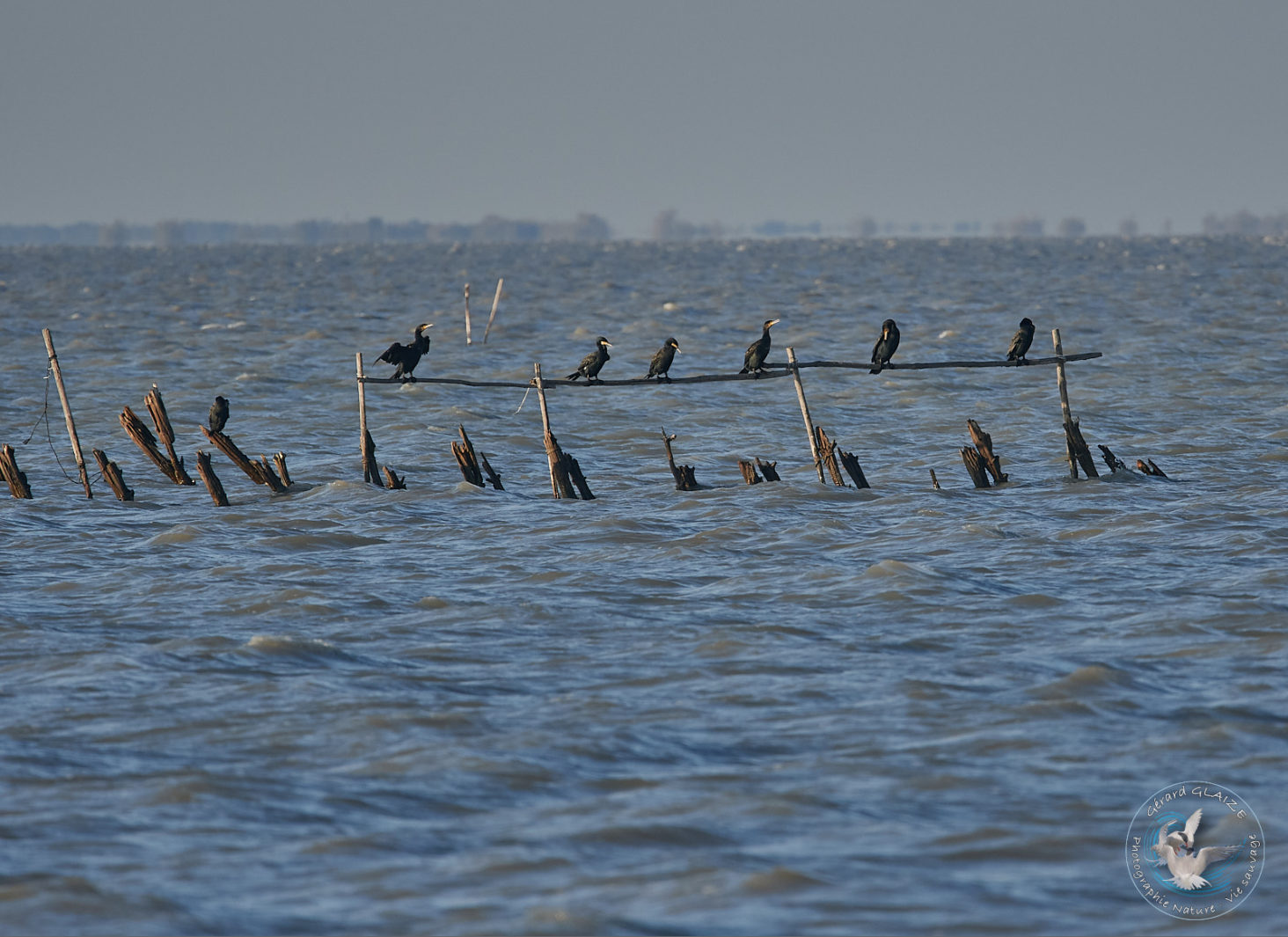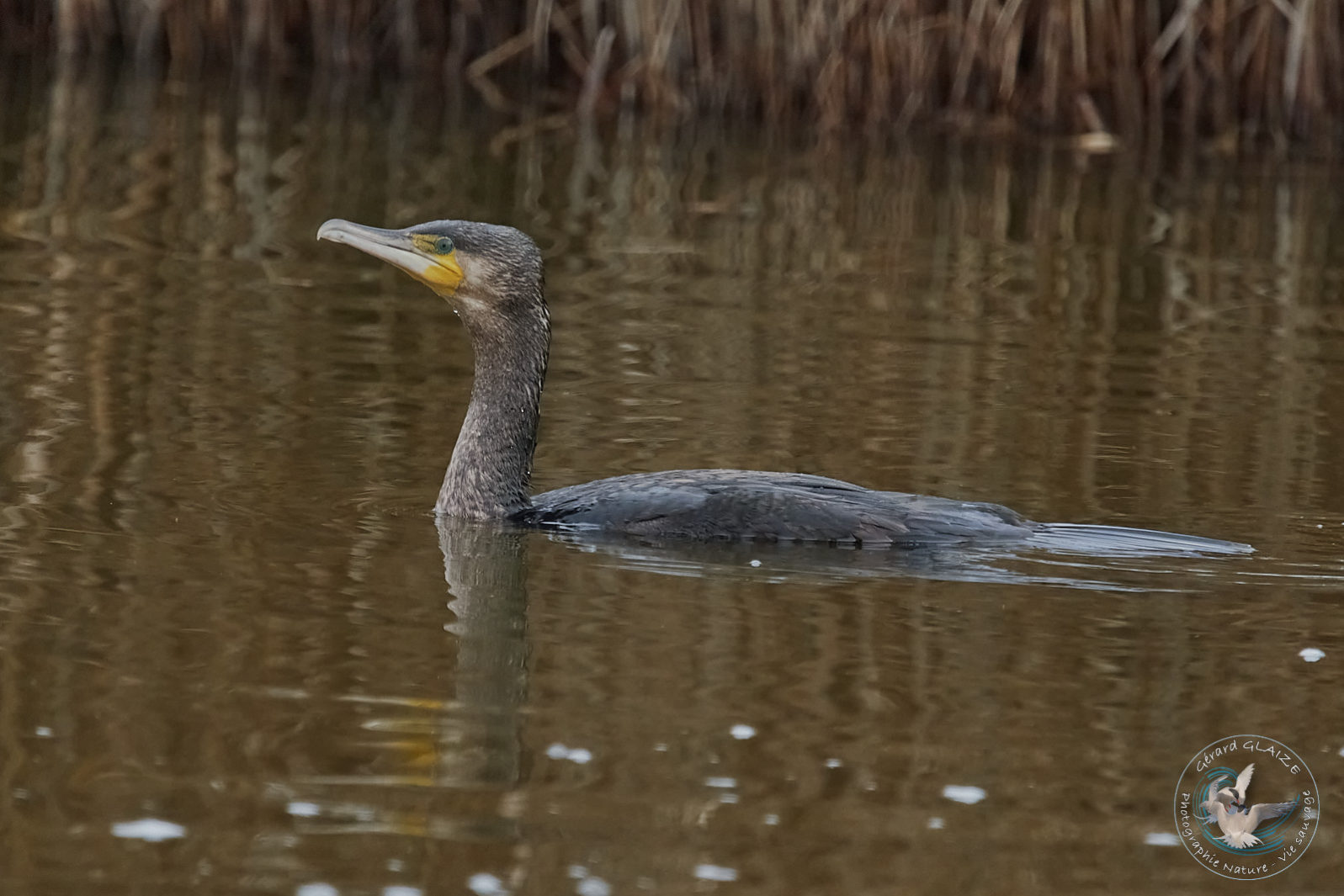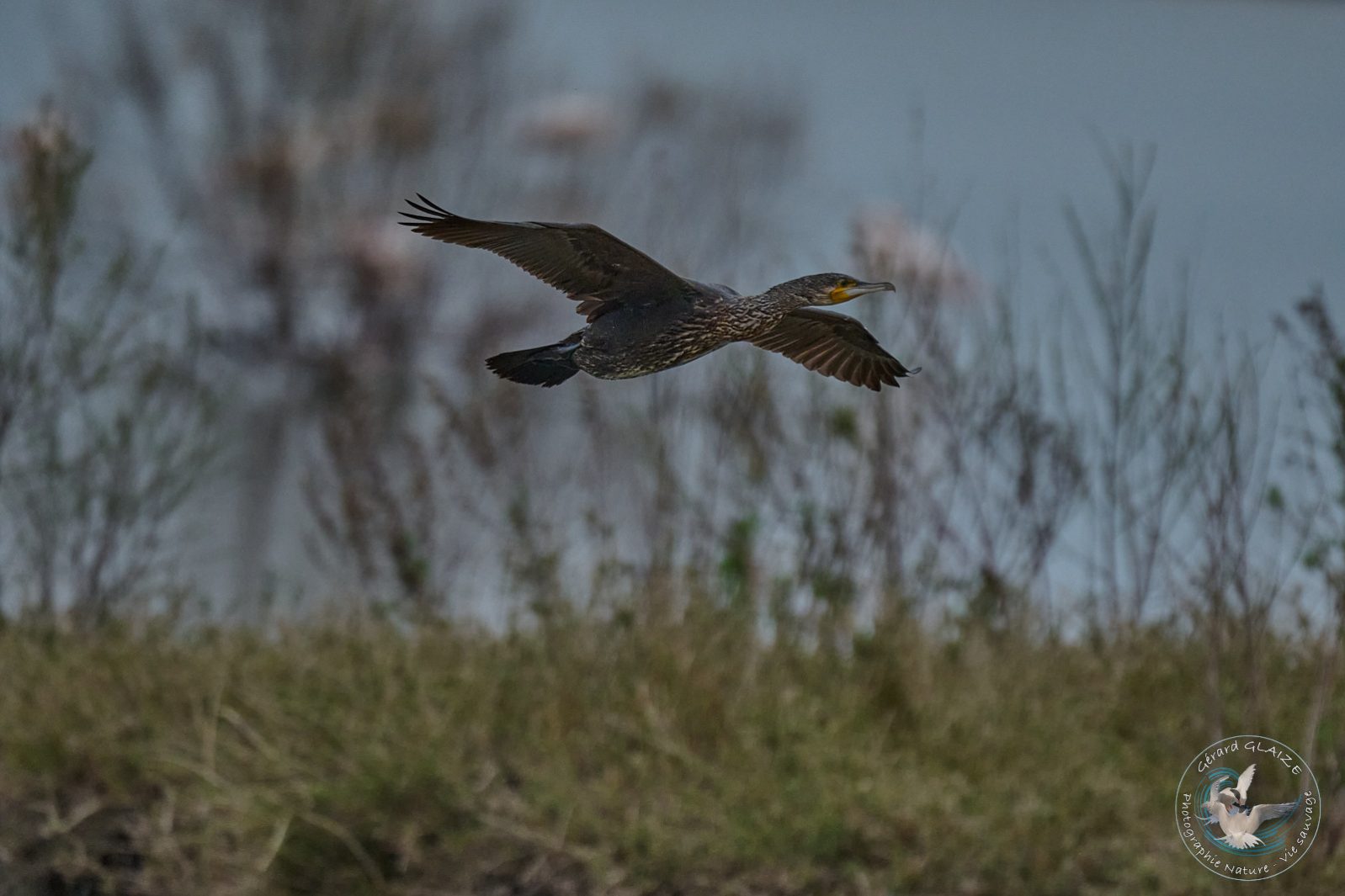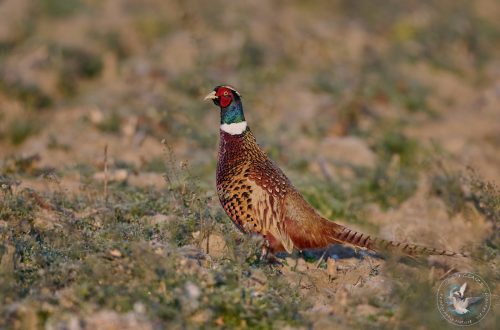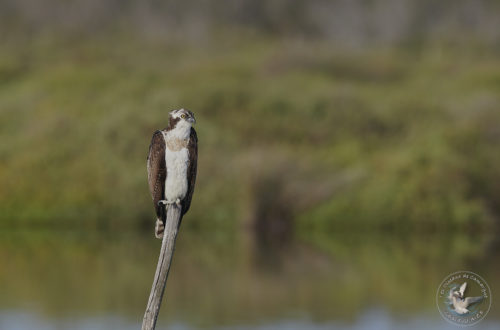Great Cormorant
The Great Cormorant or Common Cormorant, is a species of piscivorous aquatic bird therefore belonging to the Phalacrocoracidae family. Furthermore, its distribution area is very vast (Europe, Asia, Oceania, Africa, and an eastern fringe of North America); there are usually five to eight subspecies.
Adult great cormorant in breeding plumage is black, with blue and bronze-green highlights. The back is gray-bronze with dark edges. The tail is black but quite long. Head is black, with a few white feathers on the sparse crest composed of a few longer feathers. The cheeks and throat are white. Eyes are green, ranging from emerald to turquoise. The slightly hooked and powerful bill is blackish with a yellow base. The Great Cormorant has fully webbed feet. Like the Pygmy and Great Crested Cormorants, however, it has less waterproof plumage than that of other aquatic birds.
Great Cormorant
Scientific name : Phalacrocorax carbo
Family : Phalacrocoracidae
Length: 90 cm – Wingspan: from 130 cm to 160 cm
Weight : from 2.000 gr to 2.500 gr
IUCN Conservation Status: LC
Flight
The Great Cormorant flies with its head outstretched, with its neck slightly bent. Its powerful flight, with regular wingbeats, can however alternate with long glides.
Habitat
The Great Cormorant lives near bodies of fresh, brackish or salt water, rich in fish, but with little or no current. He generally avoids bodies of water that are too small or with water that is too deep. It can be an estuary, a delta, a mangrove, a sheltered bay, a lake, a pond, even a canal or a port, freshwater port.
Regime – Diet
The great cormorant feeds mainly on live fish. To do this, he fishes by diving intermittently, between two swims, in slow-moving or stagnant waters. Great Cormorant is thus capable of remaining underwater for more than a minute. It can also consume crustaceans, amphibians, mollusks as well as small nesting birds.
It dives underwater from the surface to capture its prey, which generally lives on the bottom, although it sometimes catches schooling fish in deeper areas. Its legs are widely webbed and its eyes are equipped with lenses that are sufficiently deformable to adapt to underwater vision. The largest prey are brought to the surface before being swallowed.
Nesting
This species is gregarious and nests in colonies that can bring together 10 to 500 pairs. The size of the colony, however, depends on food resources. The nest is generally a pile of branches, installed high up on a large tree or on rocks. What’s more, this nest can be decorated with algae, grass and feathers. Finally, the Great Cormorant is usually faithful to the nesting site and the nest that it used the previous year.
The clutch includes on average 3 or 4 white eggs tinged with blue-green. After that, both parents ensure incubation, which lasts 28 to 31 days, and feeding the young. The young, altricial and naked at birth, weigh less than 50 g; they have black skin. The young leave the nest 48 to 52 days after hatching, but remain dependent on the parents for another 3 weeks after fledging.
Protection
Humans have persecuted great cormorants as competitors to fishermen. Europe considered the Cormorant as an endangered species in the 1970s. The continental subspecies of the Great Cormorant, as well as the marine subspecies, were protected throughout Europe by the Birds Directive of 1979 and then in under the general regime for the protection of all bird species referred to in Article 1 of Directive 2009/147/EC of November 30, 2009 on the conservation of wild birds. The Berne Convention also included the Great Cormorant in Appendix III of the convention.
Cry
This bird, otherwise generally silent, sometimes appears at nesting sites or when it is on its perch. Its guttural cry is, however, a bit gurgling (“gra-gra”).


